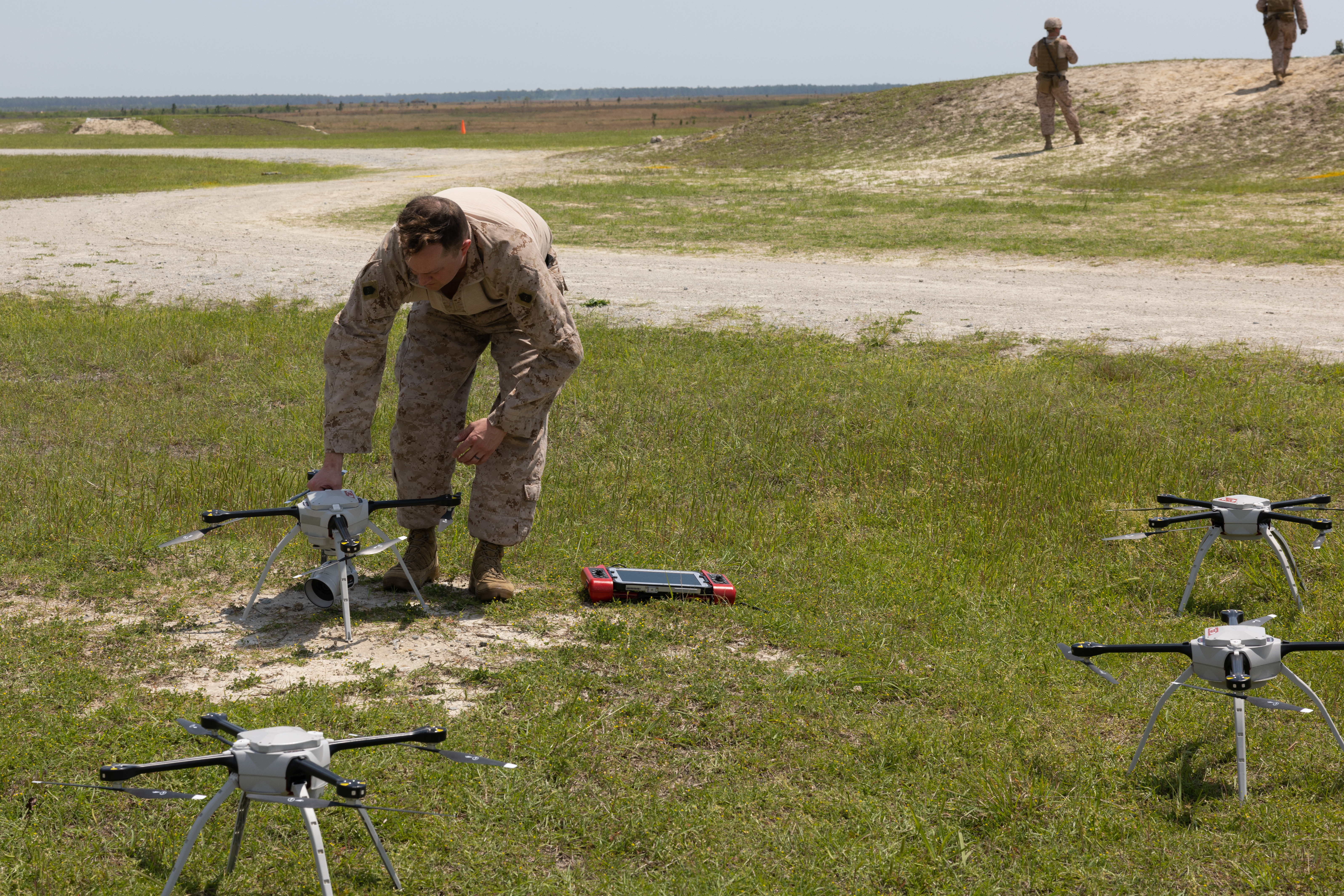
Camp Lejeune, North Carolina. (May 9, 2024): As the war in Ukraine has vividly demonstrated, drone warfare will dominate the battlefields of the future and America needs to be ready. In this photo by Lance Corporal Anakin Smith, Master Sergeant Todd Grindstaff, a weapons and tactics training chief with Headquarters and Service Battery, 2nd Low Altitude Air Defense Battalion, prepares drones for launch at a counter-unmanned aircraft firing range. The 2nd LAAD Battalion provides low altitude surface-to-air defense to a Marine Ground Task Force including the latest in counter drone technology.
On the range, Marines had to shoot, maneuver, and coordinate fires while countering multiple drone attacks simultaneously. Using advanced radar, the Marines can detect incoming drone aircraft and disrupt or destroy the threat. Under a unified command and control system, units can connect shooters with targets at combat speed under the most extreme conditions.
Some of the tools used to defeat these drones include kinetic (munitions), jamming the drone’s Global Navigation Satellite System signals, or sending blasts of microwave radiation to knock them from the skies.
Scientists are studying the use of lasers, munitions, and even counter intercepting drones as well as a sophisticated system to locate and track enemy aircraft. They are even developing methods to identify the location of enemy drone operators and tack their movements in real time. Additionally, the U.S. military is inventing highly sophisticated jamming equipment to disrupt enemy radio frequencies, cameras, and radar. Finally, the use of high-powered microwaves, in the ten-to-fifty-watt range, is being explored as they cost far less per shot than traditional missiles.
Drones are the threat of the future that the American military is planning to cope with now.


